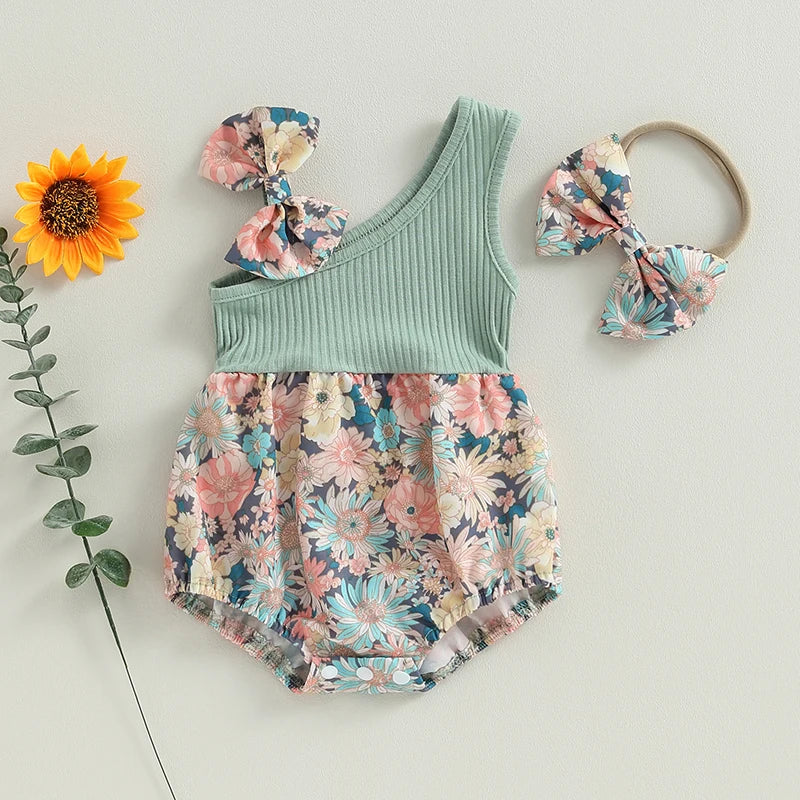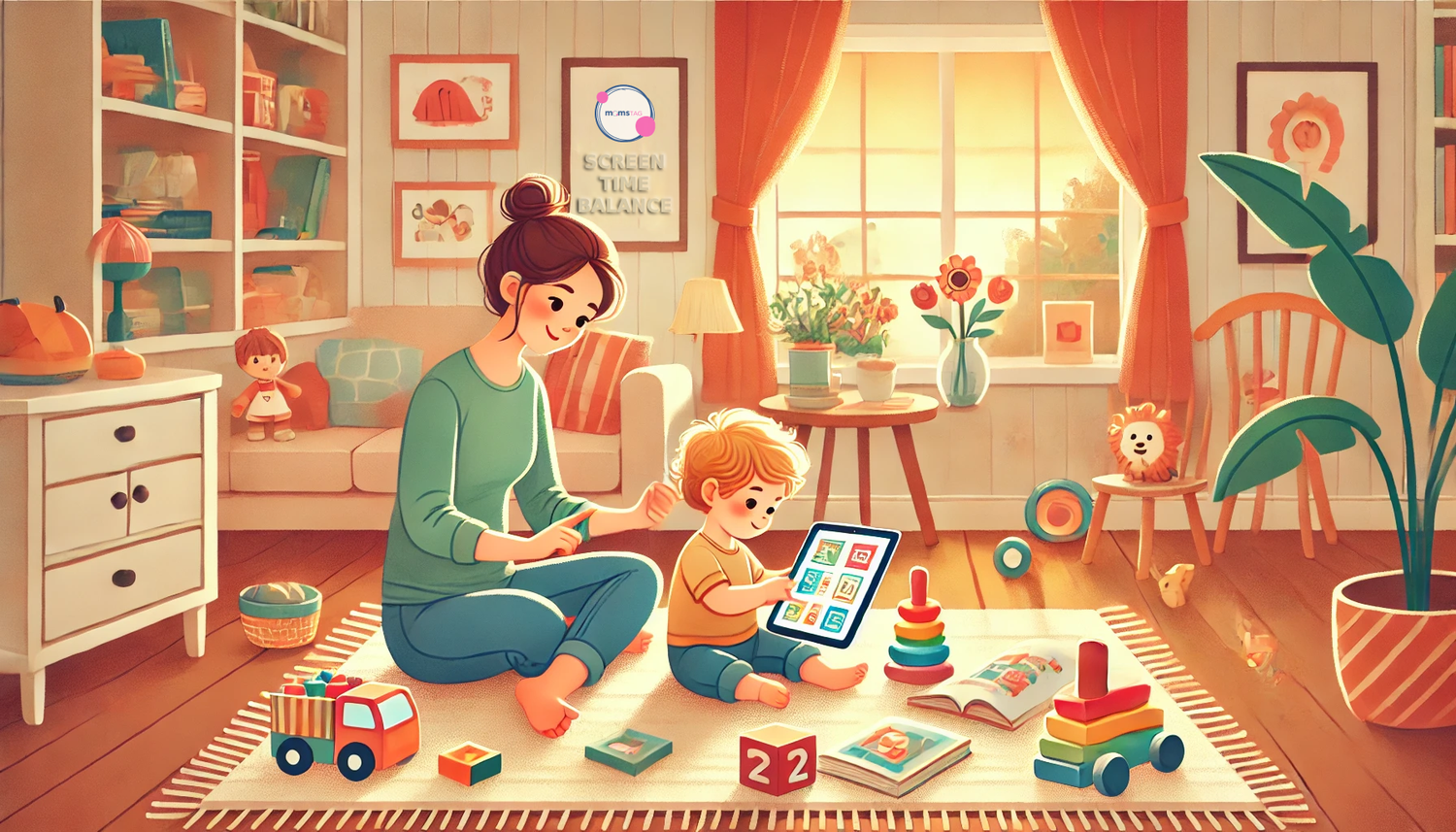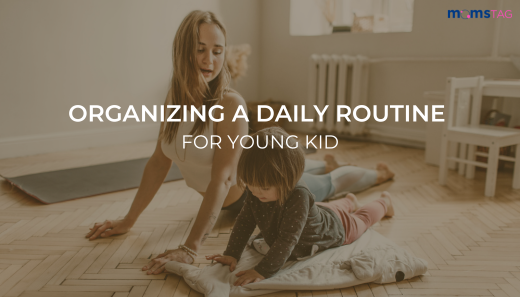In our digital age, screens are everywhere—TVs, tablets, smartphones, and laptops. Even for toddlers, screen time can be a double-edged sword. While certain apps and shows can be educational, too much exposure can hinder essential early development milestones like social interaction, language acquisition, and physical activity.
As new parents, finding a balance in screen time for toddlers is key to supporting their growth in a healthy and nurturing way
Why a Balanced Approach to Screen Time Matters for Toddlers
At this stage, toddlers learn best through direct interaction with people and their environment. Real-world experiences like stacking blocks, exploring different textures, and engaging in pretend play are vital for their growth. Excessive screen time can limit these important learning moments. Here are some key reasons why balancing screen time is essential for toddlers:
- Cognitive Development : During early years, toddlers' brains develop rapidly, benefiting most from hands-on experiences and real-world engagement.
- Physical Health : Active play helps build essential motor skills. Too much screen time, however, can create habits that lead to less physical activity.
- Social and Emotional Growth : In-person interactions teach toddlers how to communicate, empathize, and manage emotions—skills best learned face-to-face.
Setting Healthy Screen Time Limits
Establishing healthy boundaries for screen time is vital, but it doesn’t have to mean a complete ban on screens. Here are some practical steps for creating a screen-time balance:
- Follow the Recommendations : The American Academy of Pediatrics (AAP) suggests that children under 18 months should have no screen time, with the exception of video calls with loved ones. For toddlers aged 18-24 months, it’s advised to limit screen use to high-quality programming and watch it with them. For ages 2-5, aim for no more than one hour a day.
- Choose Quality Content : If your toddler does use screens, ensure they’re watching age-appropriate, educational content.
- Watch Together : Sitting with your toddler during screen time helps make it interactive. When you watch with them, ask questions, comment on what they see and what they are able to learn from it.
- Set Consistent Routines : Having a predictable routine around screen time can help manage expectations and minimize arguments. For example, you might allow a short episode after breakfast or before an afternoon nap.
- Encourage Screen-Free Zones and Times : Designate screen-free areas in your home, such as the dining room or bedrooms. Similarly, make meal times and family gatherings screen-free to encourage conversations and bonding.
- Be a Role Model : Kids mimic what they see. When they observe parents setting down phones during meals or keeping screens out of certain rooms, they’re more likely to adopt similar behaviors.
Balancing Screen Time with Engaging Alternatives
Providing toddlers with screen-free activities can prevent them from depending on screens to stay entertained. Here are some ideas to replace screen time with fun, developmental activities:
- Interactive Play : Hands-on activities, like building with blocks, playing with puzzles, or creating with playdough, enhance fine motor skills, creativity and problem-solving abilities.
- Outdoor Exploration : Spending time outdoors allows toddlers to experience nature, run, jump, and engage with their environment. Even a short walk in the park can be full of new sounds, colors and textures that stimulate their curiosity.
- Reading Together : Reading to toddlers introduces them to language, helps build vocabulary and strengthens your bond. Choose colorful books and engage them by asking questions or having them point to pictures.
- Creative Arts and Crafts : Art activities like coloring, finger painting, or using stickers are excellent for developing creativity and fine motor skills. It’s also a fun way for toddlers to express themselves.
- Music and Dance : Toddlers love music and movement! Put on some fun songs and dance together. This not only releases energy but also develops coordination and rhythm. Music and dance is the best stress buster.
- Sensory Play : Toddlers enjoy activities that let them explore with their senses, such as playing with water, sand, or sensory bins. This type of play is soothing and provides a tactile experience they can’t get from a screen.
Addressing Screen Time as They Grow
As toddlers become more aware of screens, teaching them healthy habits early on will benefit them long-term. They will begin to understand that screens are just one option for entertainment and that there are many other ways to engage and have fun. Here’s how to make the transition smoother as they grow:
- Introduce Independent Play : Encourage toddlers to engage in solo play. This might include giving them a favorite toy or activity and letting them explore on their own. Over time, this will foster independence and creativity without relying on screens.
- Set Up a Reward System : If your toddler asks for screen time often, consider implementing a reward system for screen-free activities. For example, after playing outside or engaging in a screen-free activity, they can earn a small reward, like a sticker.
- Communicate and Set Expectations : If your child starts to ask for screen time more frequently, try explaining why you have limits. Even toddlers can understand simple phrases like “Screens are for later,” or “After we play, we can watch a little bit.”
Final Thoughts: Achieving Balance
Finding the right screen-time balance for your toddler can be challenging, but with some consistency and creativity, it’s possible to create a routine that benefits their health, happiness, and development. By keeping screen time intentional, interactive, and limited, you can foster a nurturing environment that prioritizes your toddler’s growth and well-being.
Remember, every family is different, and balance may look a bit different from household to household. What’s important is that screen time is intentional and balanced with plenty of real-world play and interaction. With these steps, you’re setting the foundation for healthy screen habits that will benefit your child well into the future.






Dejar un comentario
Todos los comentarios se revisan antes de su publicación.
Este sitio está protegido por hCaptcha y se aplican la Política de privacidad de hCaptcha y los Términos del servicio.